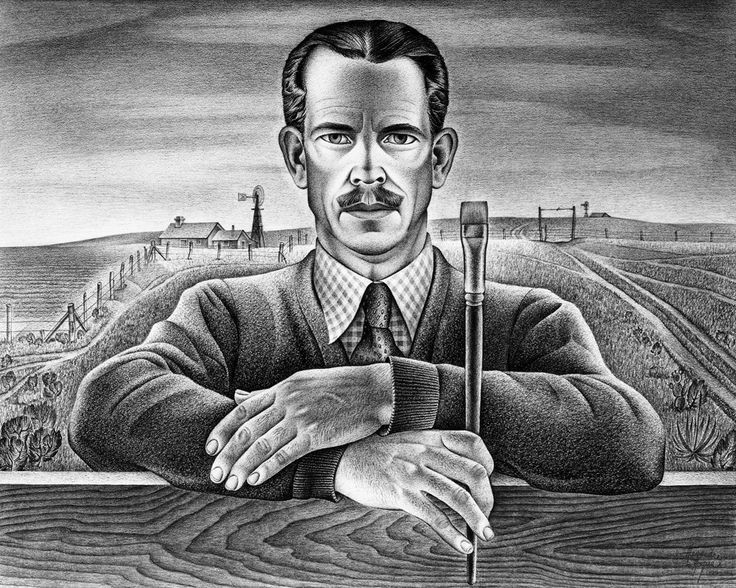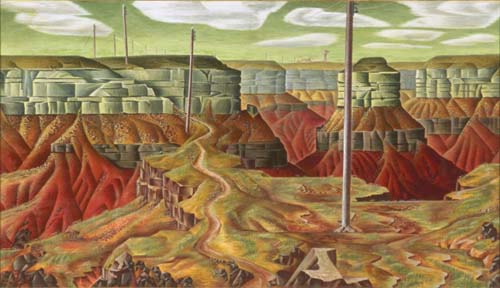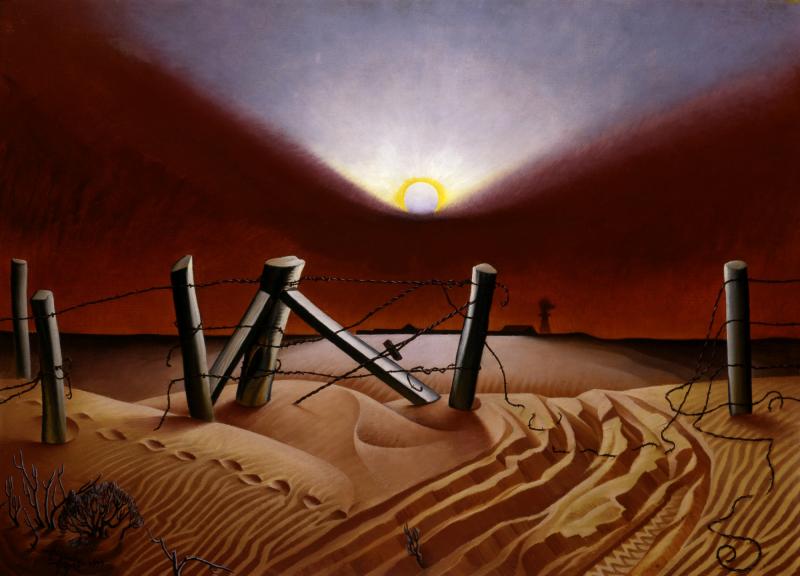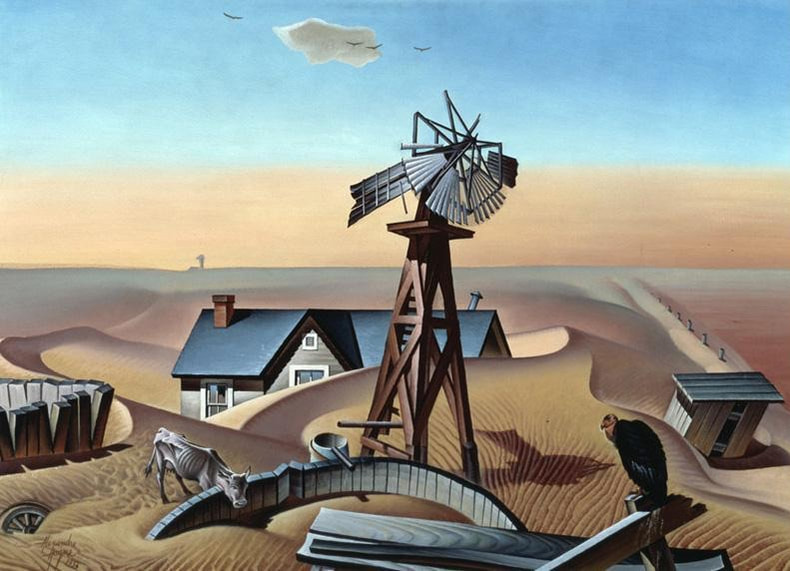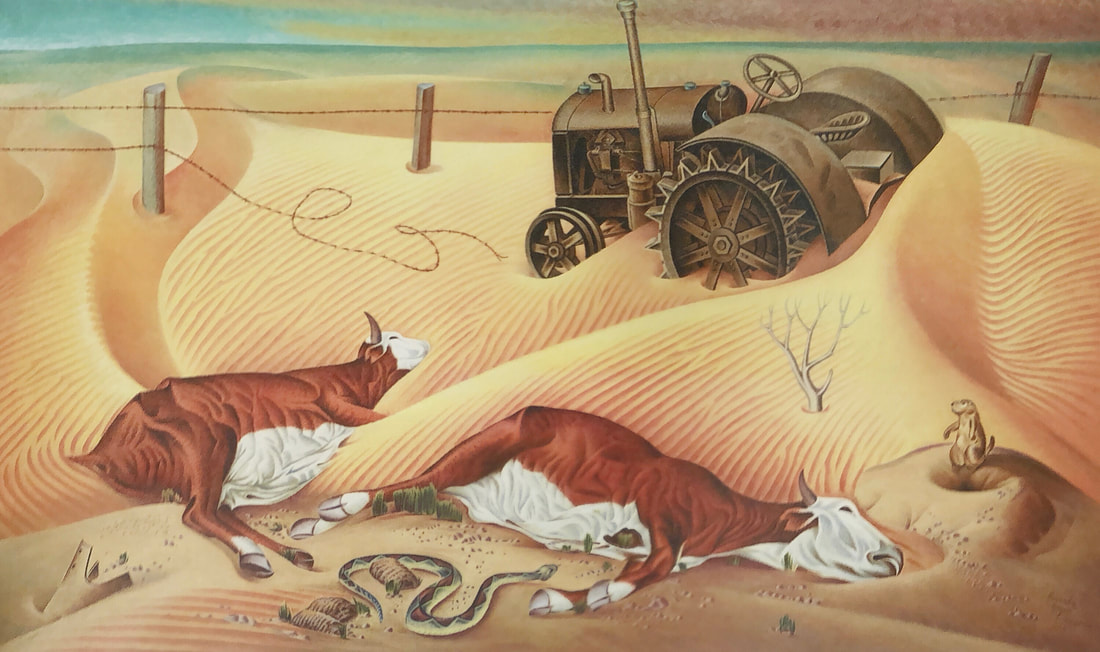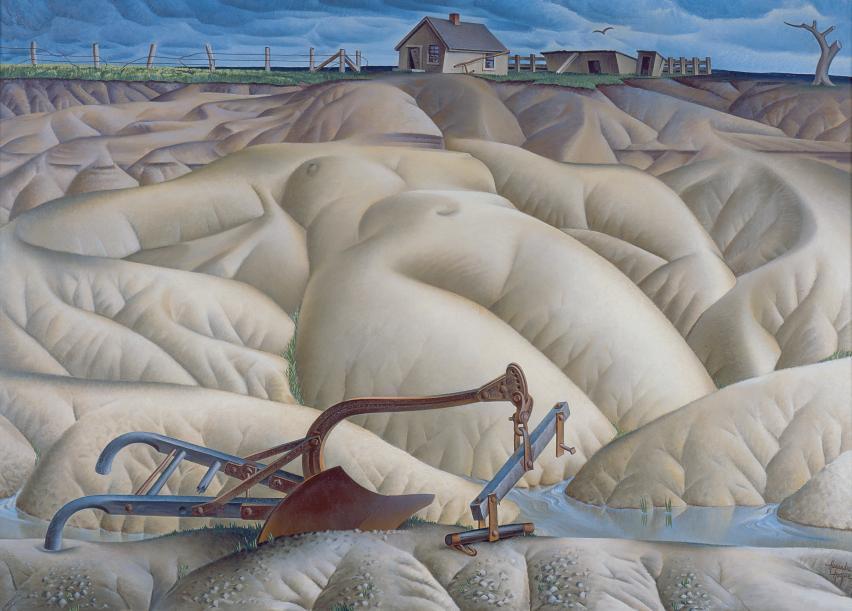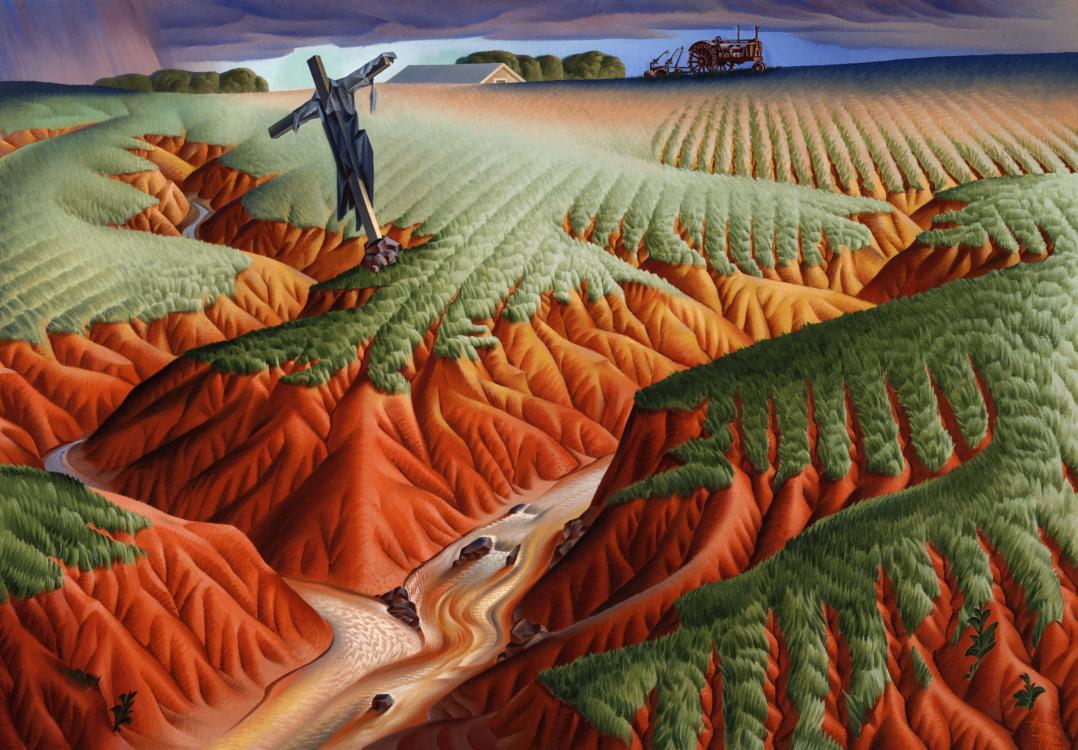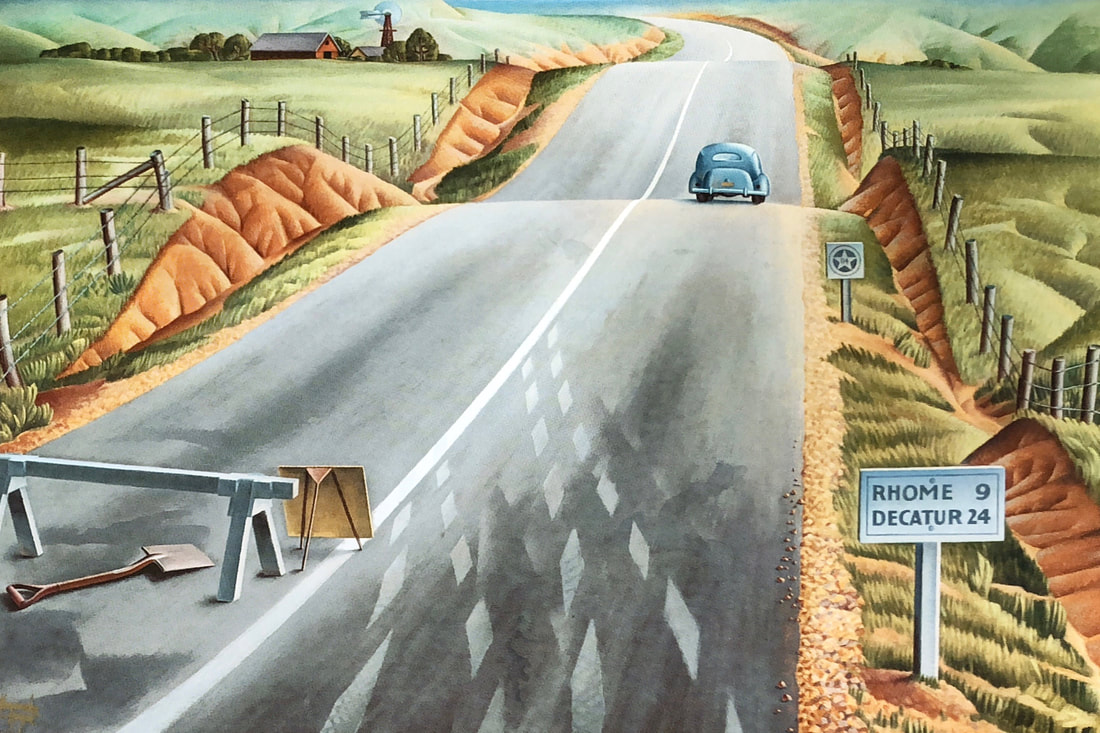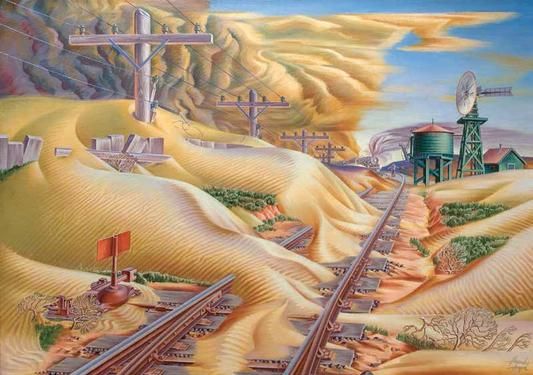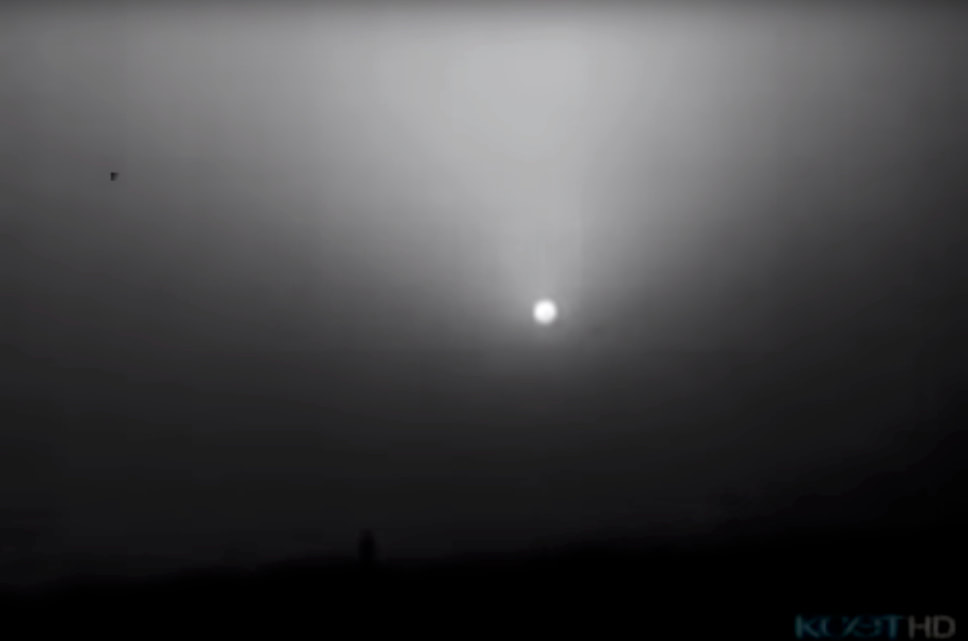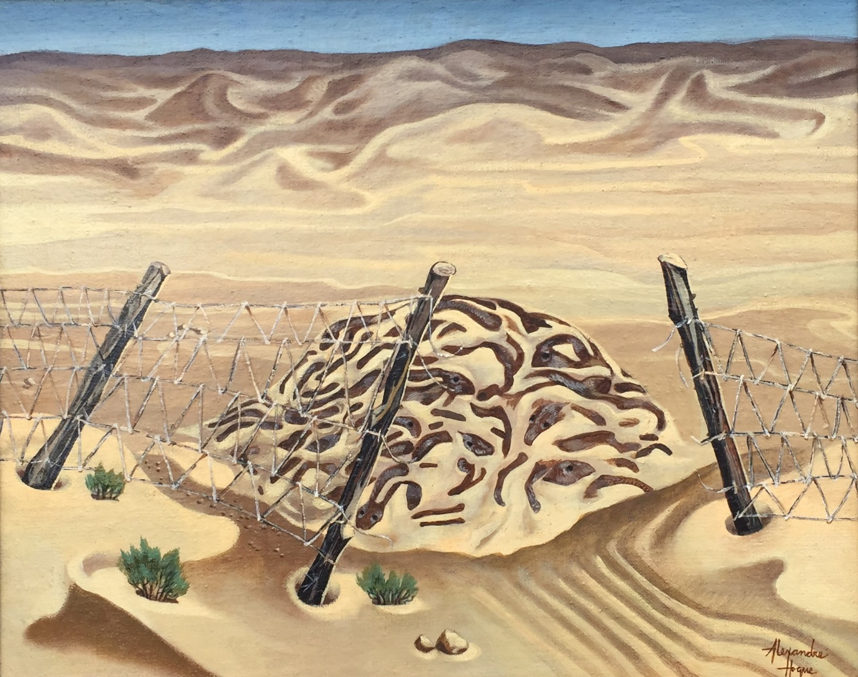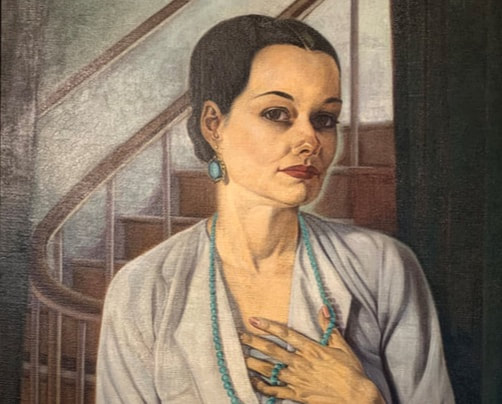ForwardIn 2018, Russell Tether Fine Arts Associates was contracted to research and validate a recently rediscovered Dust Bowl painting by Alexandre Hogue. We began this research by going to the Smithsonian Institution’s Archives of American Art, which contain letters to and from Alexandre Hogue, newspaper articles, catalogues, and publications. During this research, we came across a great deal of information that contradicts previously accepted information about Hogue’s paintings . . .
|
Red Earth Canyon
|
Dust Bowl
|
Drouth Stricken Area
|
Drouth Survivors
|
Mother Earth Laid Bare
|
The Crucified Land
|
Road to Rhome
|
Corrected Timeline of Hogue’s Erosion Series
|
Managing Conflicting Roles as a Teacher and Artist
|
Recently Discovered: Jacks
|
Hogue's Mystery Muse: The Portraits of Elizabeth Page
|

